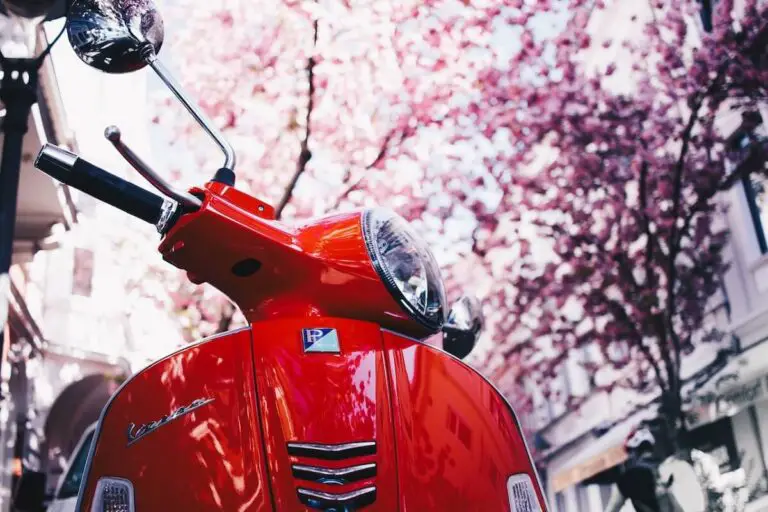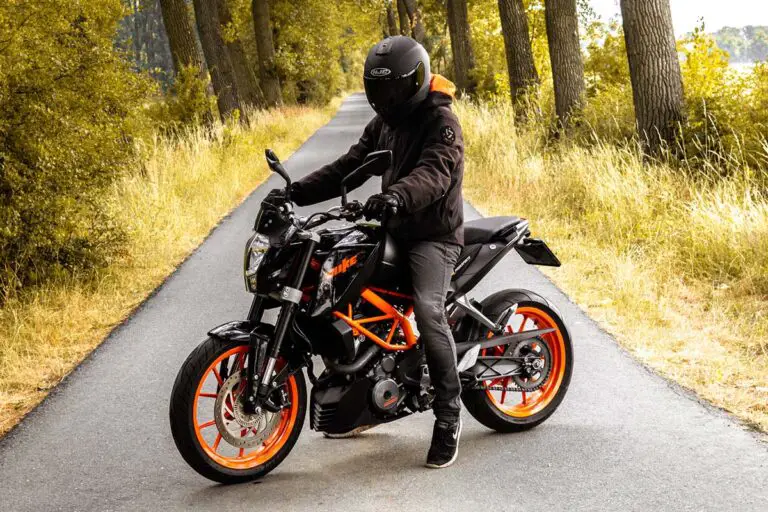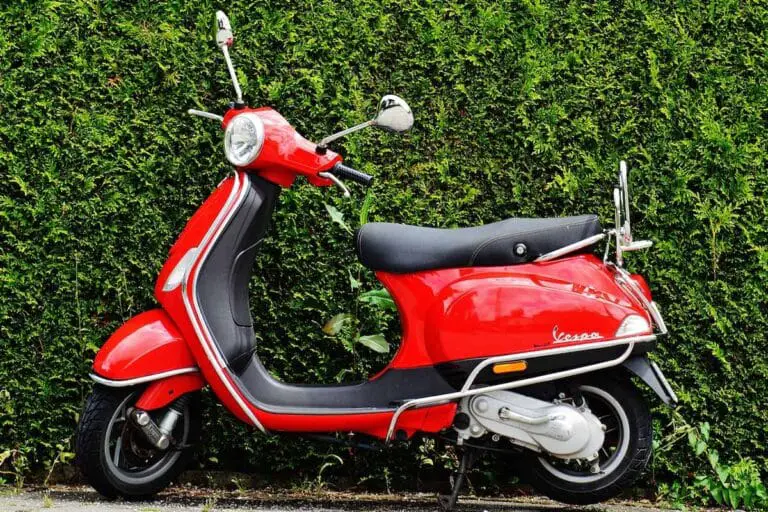How to Stay Warm on a Motorcycle (11 Tips)
Disclosure: We may get commissions for purchases made through links in this post.
Fact — not all motorheads do the yearly hibernation of their thumpers. Some ride for as long as they can into the winter season. And fewer still are those who ride year-round.
These revheads are not impervious to the cold, nor are they demigods. But they could be following a checklist on how to stay warm on a motorcycle.
If you are wondering how to stay warm on a motorcycle during cold-weather/winter riding, you need to equip your bike with a windscreen and heated seat and wear weatherproof motorcycle gear (among other things). The latter includes insulative clothes and accessories that will keep you from freezing.
For reference, below is a detailed rundown of how to stay warm on a motorcycle when riding in winter or cold weather:
- Plan ahead of time.
- Get a motorcycle windshield.
- Layers, layers, and more layers.
- Include warming gadgets in your repertoire.
- Top it off with weatherproof motorcycle gear.
- Add a heated seat and heated grips.
- Plug a rheostat into your system.
- Use weather-appropriate riding boots and a face mask.
- Do not ride on an empty stomach.
- Take small breaks in between.
- Know when it is a no-go.
If the above list is a bit overwhelming, just remember that they are all horseshoed into three objectives — insulation, weatherproofing, and staying dry. Hopefully, this mnemonic encourages you to continue reading and learning more about how to keep warm when riding in the dead of winter.
How to Stay Warm on a Motorcycle
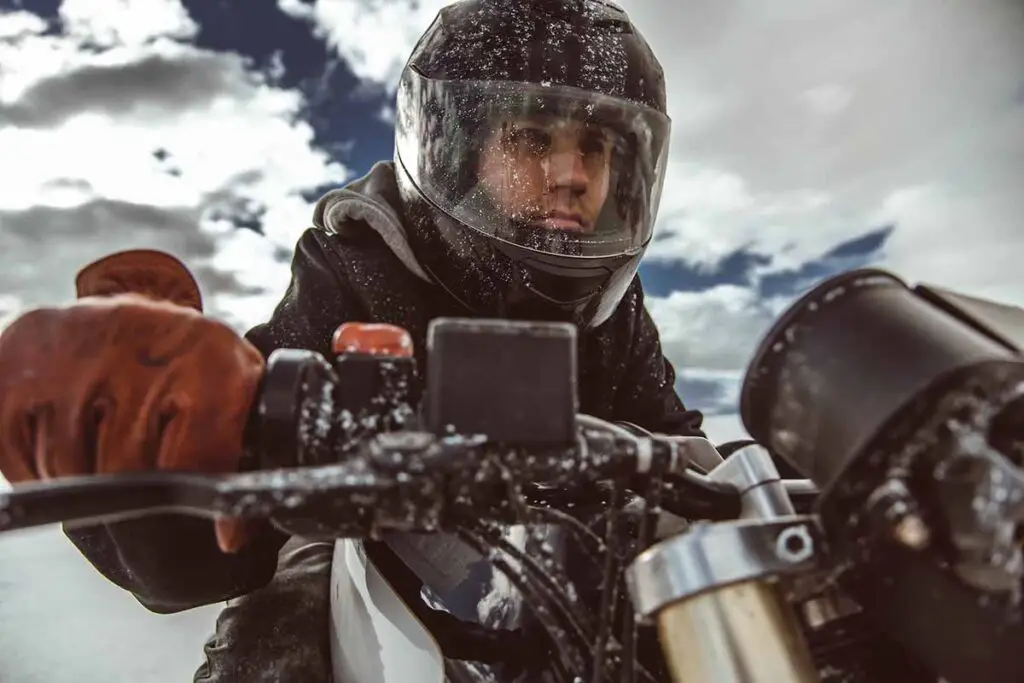
1. Plan ahead of time.
Alongside planning your itinerary, you should also be prepared for weather conditions you are likely to encounter. Doing this step is crucial, especially when planning long rides.
Having an idea of what to expect in advance will make it easier for you to put together the appropriate outfit that ensures you remain warm and toasty throughout the duration of the ride.
2. Get a motorcycle windshield.
Motorcycle riding in winter or inclement weather is often accompanied by harsh winds. And as luck would have it, your face and hands are the first body parts to take the brunt of their impact.
That said, it would be wise to have an extra line of defense up front if you want to protect them from the cold. Adding an aftermarket windscreen like Honda VTX-1300S 1300 S Retro Switchblade Windshield (view on Amazon) — if you have not done so already — will do just the trick.
3. Layers, layers, and more layers.
Some folks may disagree, but layering is a universal approach to clothing — not only in pop fashion but also in activities that entail changes in altitude or climatic conditions (motorcycle riding included). With the latter, however, function is the main goal and not style.
Clothing layers keep the core warm and dry, helping riders maintain control of their two-wheeler in freezing temperatures.
Some motorheads swap out motorcycle layers for hiking ones, as the clothing pieces reportedly serve the same function but with half the heft and bulk.
This perspective is understandable, as most winter riding gear consists of at least three layers of clothing underneath a heated, warm motorcycle jacket and weatherproof suit. While the insulation is great, the collective weight can make doing shoulder checks a struggle.
Note that this hack came from experienced riders with other hobbies like overlanding and landscape photography. As such, they would already have these substitutes in hand, so swapping out one for the other would be easy.
You may not find it as convenient, especially if you own nothing but motorcycle gear. But to try it out — start with swapping one or two items, like biker base layers for hiking ones, and a fleece jacket for a down jacket like Rab Men’s Positron Pro Down Jacket (view on Amazon).
4. Include warming gadgets in your repertoire.
In freezing temperatures, sometimes multiple clothing layers and warm gloves for motorcycle riding would not suffice to keep you warm. Therefore, adding electric accessories to your repertoire is highly advisable, especially when riding close to temperatures of 32—40 °F (0—4.4 °C). These items include electric gloves, socks, liners, vests, leggings, and jackets.
5. Top it off with weatherproof motorcycle gear.
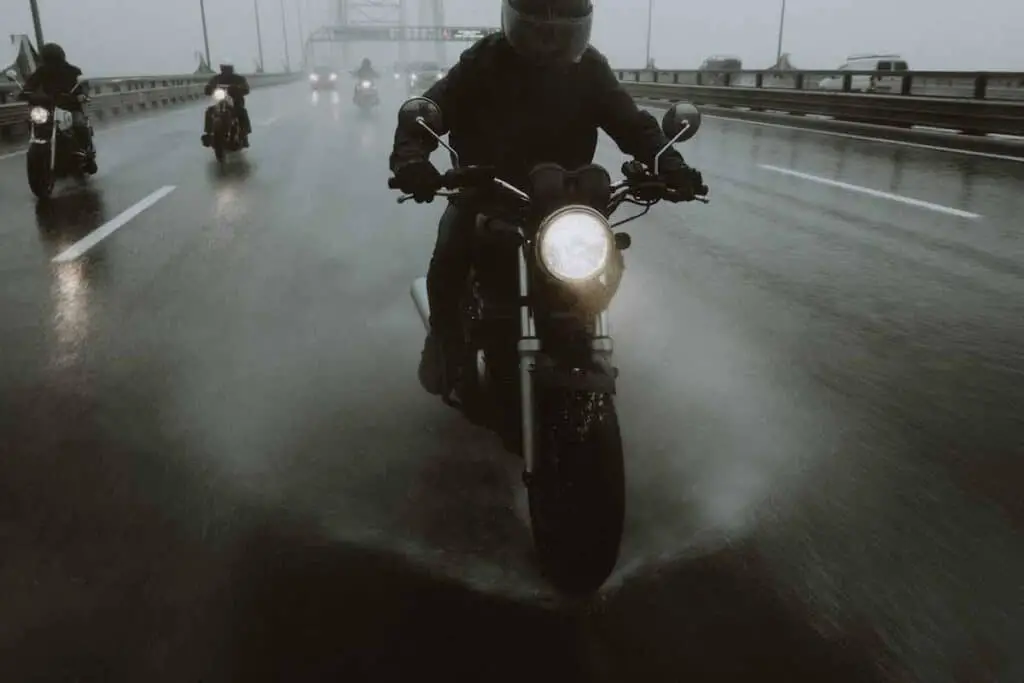
By weatherproof, I mean your motorcycle gear also has to be water-resistant and moisture-wicking. (After all, cold-weather riding is not confined to just riding in winter.)
The reason for these requisites is that you need to keep dry to stay warm while riding. You can only do this if your riding ensemble is capable of drying up quickly after being exposed to rain or snow.
Once you have items #3 to #5 down, finish the look with a motorcycle neck warmer and an insulative riding suit.
Depending on your preferences, you may choose between a jumpsuit like Joe Rocket Survivor Men’s Waterproof 1-Piece Motorcycle Riding Suit (view on Amazon) or a two-piece set consisting of a motorcycle jacket and a pair of weatherproof, water-resistant pants.
6. Add a heated seat and heated grips.
Even if your inner layers are perfectly cinched at the wrists and ankles, your hands and legs still suffer due to the cold weather and are the first to likely show hypothermic symptoms. This is because warm clothing does not completely prevent freezing in your extremities.
This is where a heated saddle (view on Amazon) becomes useful, as it aids in keeping your blood warm and channeling heat up into your body. Meanwhile, heated grips protect your hands (especially your fingertips) from freezing and are best paired with high-quality motorcycle gloves.
7. Plug a rheostat into your system.
Should you heed items #4 and #6 in this list, then this electrical component becomes a must-have in your two-wheeler. Basically, a rheostat is a “variable resistor which is used to control current.”
Having this hard-wired between your heated saddle or vest and battery allows you control over temperature settings.
8. Use weather-appropriate riding boots and a face mask.
To be all set, complete your riding apparel with a thermal face mask and riding boots. For the face mask, I strongly recommend Terramar Men’s Thermolator II Camo Balaclava (view on Amazon).
It has a great look and can double as a neck warmer when not covering the face. Meanwhile, female riders will benefit from owning a pair of Milwaukee Leather MBL9375 Twin Zipper Lock Riding Boots — which can be used in winter and inclement weather.
9. Do not ride on an empty stomach.
There are several reasons why having a full meal before taking your wheeler out for a spin is important.
One, you do not want to risk finding your ride unpleasant because you are hungry. Two, food acts as fuel in your body, keeping your energy levels up when riding in harsh weather. And three, food digestion while riding actually helps keep you warm since your body creates heat while burning the calories in what you ate.
10. Take small breaks in between.
The wind chill is an aggravating factor to ambient temperature. Even if you are properly clad, you may still feel extremely cold during winter rides.
When that happens, opt for a quick stop at a cafe or snack bar to rest and warm up. These stopovers will also be a great opportunity to stretch your legs and get your blood flowing.
11. Know when it is a no-go.
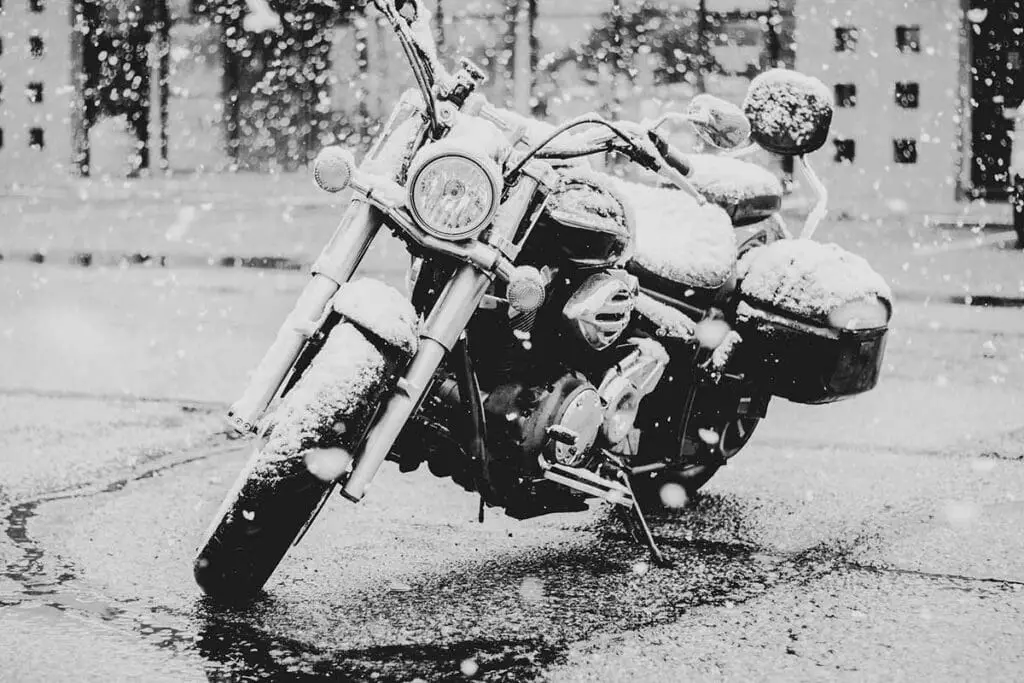
This statement can go several routes and ultimately affects planning and choice of clothing when riding in winter.
Since 32 °F (0 °C) is the unspoken hard stop for most riders, the closer weather conditions are to this temperature, the more insulative one’s choice of clothing and motorcycle gear should be. However, some riders may have lower thresholds than this in what their body can tolerate.
Even for daredevils with a much higher tolerance, 32 °F (0 °C) should still be the gatekeeper. At this point, the bigger consideration is not acclimatization but increased on-road risks while riding.
As temperatures drop, climatic conditions tend to become harsher (not to mention that wind chill feels worse when riding at high speeds).
When that happens, even the bravest and most warm-blooded of motorheads will not stand a chance against the beast that is mother nature.
Conclusion — Staying Warm on a Motorcycle
In summary, here are tips on how to stay warm on a motorcycle shared in this guide:
- Plan ahead of time.
- Get a motorcycle windshield.
- Layers, layers, and more layers.
- Include warming gadgets in your repertoire.
- Top it off with weatherproof motorcycle gear.
- Add a heated seat and heated grips.
- Plug a rheostat into your system.
- Use weather-appropriate riding boots and a face mask.
- Do not ride on an empty stomach.
- Take small breaks in between.
- Know when it is a no-go.
This 11-step process may seem like a ton of things to do at first glance. But for a rider testing the limits of their acclimatization and driving skills (not to mention wind chill tolerance), adhering to these should be a no-brainer.
Even if you just recently decided to ride during winter, all this advice will become second nature to you as you gain experience riding in freezing or harsh weather conditions.

